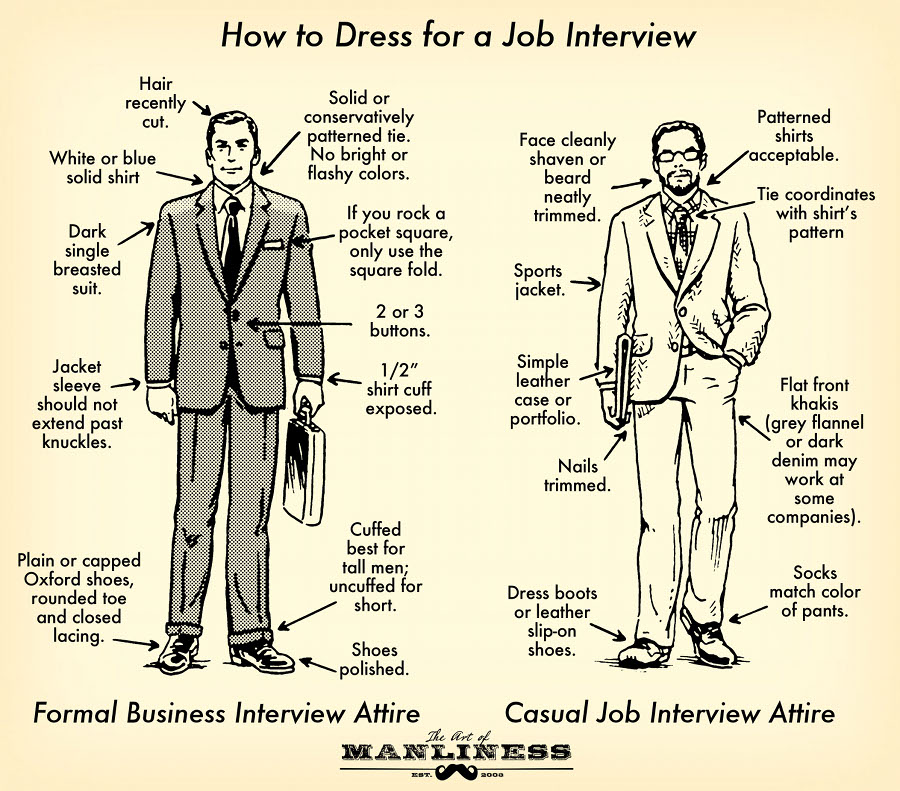Guest Author
Success is a dream shared by all, but it’s one that is not so simple to attain. There are many steps you must take before arriving at true success and the first one is an interview. With so much pressure weighing on such a short and simple conversation, it’s no wonder that they are often so stressful; keeping job applicants tossing and turning the entire night prior.
Yet as daunting as it may seem, the interview is something that anyone can master, as long as they take the proper amount of preparation. While most understand this to mean brainstorming for clever stories to use as examples for potential questions and attempting to relax and get a good nights sleep beforehand, a crucial aspect that must be considered at length is wardrobe, down to the very color of the clothes being worn.
At an interview, you want to come off as professional; therefore, you must dress the part, but dressing in a suit is not something you do to be noticed. It’s something you do NOT want to be noticed.
In most cases, every candidate interviewing for a position will be dressed in formal business attire, but if you were to enter an interview dressed casually, you will stick out like a sore thumb, and not in a good way. Though not exactly the same, color works in a similar fashion. If you were to wear bright, vibrant colors and elaborate patterns, you will stand out against the crowd. But in an interview, you don’t want to be remembered for your interesting clothing; rather, it is your value as an individual and strengths as a worker that you want imprinted in the mind of your interviewer. Unless the interview is for a job in clothing design, being remembered by your clothes is not necessarily an asset.
While choosing colors that will stand out is not recommended, there is an actual science behind which colors to wear, as colors have varying connotations, each eliciting a different response from viewers. Knowledge of this can help you decide which colors to wear so that you can influence your interviewer subconsciously into viewing you as a confident and professional individual.
The color black is one that represents an aura of power. It makes its wearers seem strong and confident. However, because it also has the ability to make one seem a bit overconfident and sometimes even unapproachable or reserved, it is best not to make black the main color of your ensemble; rather, make only slight use of the color, perhaps in the form of a necktie or purse.
The best colors one can wear to an interview are blue, brown, and gray. When interviewing potential employees, the directors at 12 Palms Rehab center agree that the cooler colors draw them in more than brighter, warmer ones.
Besides for tones that don’t stand out in a way that may be detrimental, each signifies a quality that all good employees should have. Both blue and brown are colors that make their wearers seem dependable, blue because it is such a common favorite, and people are generally more comfortable with those who share their interests, and brown because it makes one seem composed and clear-minded. Gray, on the other hand, lends an air of control and confidence, yet it does so without the impression of arrogance that is often a side effect of black.
Most other colors should be avoided altogether. Red, orange, and yellow draw too much attention while also being colors that evoke many different feelings, an unwanted effect for someone looking to appear relaxed and restrained at an interview. Additionally, purple and pink, particularly for men, are feminine colors that should be avoided, as they can give one the appearance of being uncertain.
With this in mind, be sure to plan your attire ahead of time. Dress to impress, and you will paint your way to success in no time.
Feel free to connect with Courtney on her Google+ page.


